Poor and overloaded infrastructure is holding back development in Auckland, leading real estate agents have warned, with one saying “it’s a nightmare”.
Ray White Epsom agent Ross Hawkins said infrastructure – that’s anything from drains and sewers to roading, medical services and schools to cater for extra people in an area – needed to be updated and upgraded before sites can realise their potential.
As more density was added by way of housing and people, it would take a huge investment to get the city, and country, out of the mess it was in, he said.
Hawkins was recently in Hong Kong, and noted the multiple bridges across the harbour and tunnels underneath. He said eight million people live in a tiny area but have motorways and trains that flow with no queues.
Poor and overloaded infrastructure is holding back development in Auckland, leading real estate agents have warned, with one saying “it’s a nightmare”.
Ray White Epsom agent Ross Hawkins said infrastructure – that’s anything from drains and sewers to roading, medical services and schools to cater for extra people in an area – needed to be updated and upgraded before sites can realise their potential.
As more density was added by way of housing and people, it would take a huge investment to get the city, and country, out of the mess it was in, he said.
Hawkins was recently in Hong Kong, and noted the multiple bridges across the harbour and tunnels underneath. He said eight million people live in a tiny area but have motorways and trains that flow with no queues.
He conceded the bigger population in Hong Kong meant more money to spend on infrastructure, and reckoned when the City Rail Link in Auckland was completed the way people lived in the CBD would change, but that was still some way off.
The Government has put light rail on hold, but the City Rail Link, a 3.45km underground rail link, is continuing, with 2026 a tentative date for commuter use.
But Hawkins questioned the time taken to get projects across the line in New Zealand.
“Every time you go to Hong Kong, there’s a new bridge and another tunnel. They just do stuff – they work 24/7 and they just do these projects.”
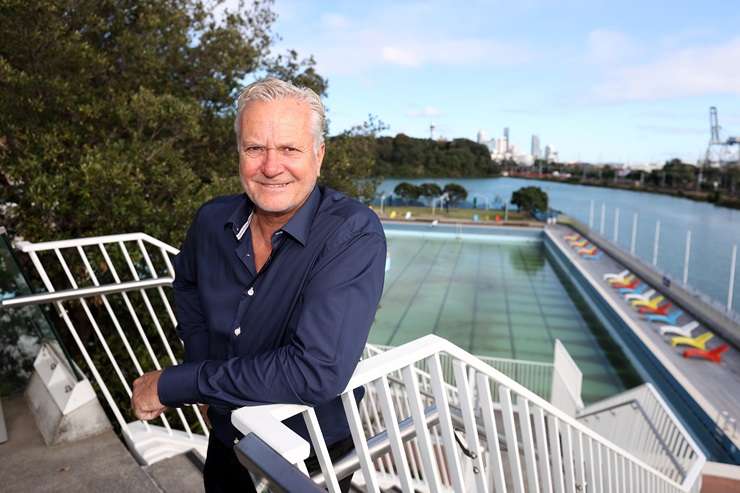
Ray White agent Ross Hawkins: “It’s putting people off building new homes and doing major renovations now because it’s just so stressful and so time-consuming.” Photo / Fiona Goodall
New Zealand was capable of moving faster, with Hawkins citing the relatively quick repair of the bridge to the Coromandel after Cyclone Gabriel, but he believed much more was needed and fast.
There were many houses on cliffs around Auckland still waiting for council consents for owners to be able to rectify what happened over a year ago, with Hawkins describing the Resource Management Act system as “archaic”.
“It just costs people a fortune to do and the unknowns of it, it’s affecting people’s lives. It’s so wrong.”
While the Government had promised to reform the consenting process, Hawkins said nothing happened quickly.
“It’s not just Auckland either but the whole country, the whole consenting problem. It’s putting people off building new homes and doing major renovations now because it’s just so stressful and so time-consuming and so costly to do it,” he said.
“You’re better to buy a house that’s already done and just get on with life rather than having to go through tearing your hair out and trying to get things done and all the consultants that are feeding from the trough costing you tens of thousands, or hundreds of thousands, of dollars before you even start any work.”
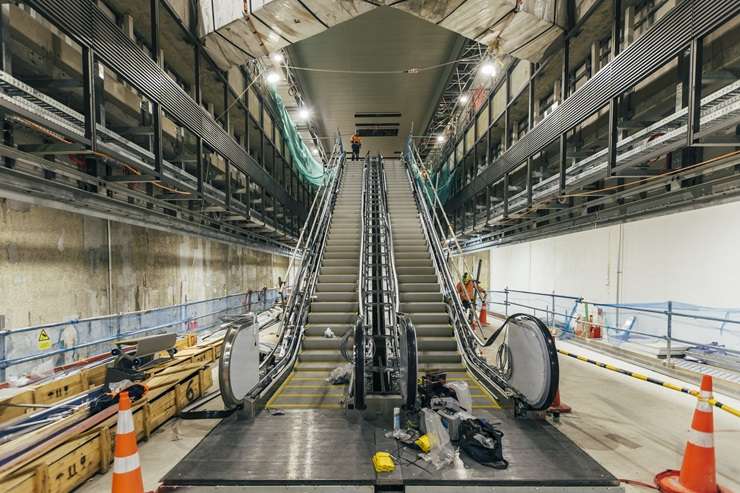
The City Rail Link is due to come on line in 2026, improving commuter times into the city. Photo / New Zealand Herald
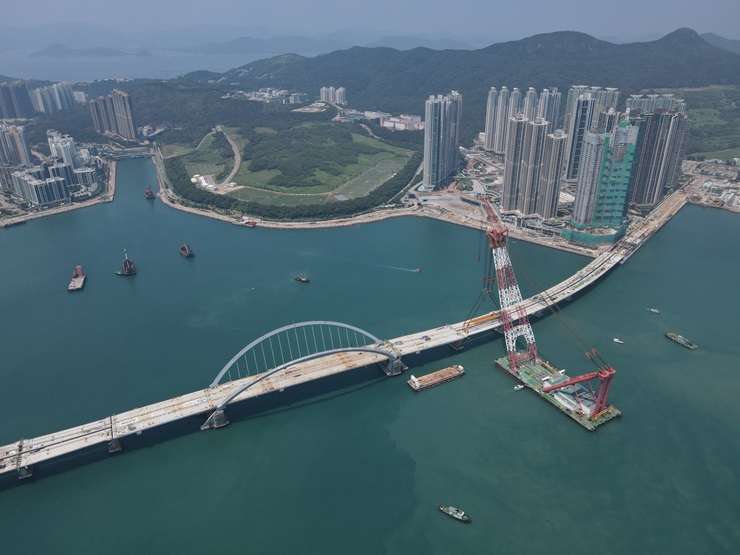
Hawkins praises the speed at which infrastructure projects are completed in Hong Kong. Photo / Getty Images
Westpac said 125,000 more houses were needed over the next few years, but chief economist Kelly Eckhold said it was unlikely that many would be built, and that population growth pressures meant there would also need to be more roads, schools, hospitals and government services.
“That’s one of the reasons why we can understand the Government is faced with some pretty tough fiscal choices right now, because it’s hard to significantly reduce capital spending at a time where the population is growing and the demand for services is growing.”
According to a recent ASB report, the country faces a $1 trillion bill over 30 years to bring infrastructure up to scratch and to future-proof.
“The country’s population is expected to be anywhere from 500,000 to two million people higher in 30 years, which would require an additional 175,000 to 700,000 dwellings and associated infrastructure,” the report said.
Professor John Tookey, from AUT’s School of Future Environments, said progress had been made in infrastructure but the process was incremental.
Infrastructure was a complex problem with lots of moving parts: “You don’t just wave a magic wand and where one day there was nothing the next day we’ve got lots – it doesn’t work that way.”
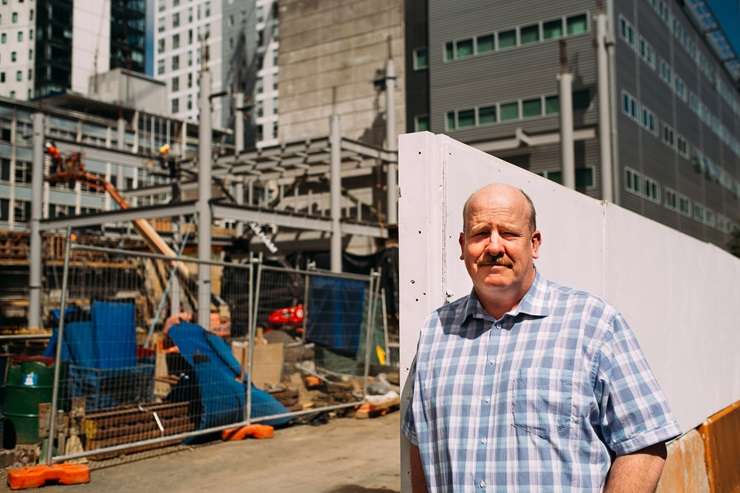
Professor John Tookey says Kiwis have high expectations “at every level”, yet infrastructure spending in New Zealand is low compared to spending in other western countries. Photo / Supplied

Increased density is likely to put a strain on Auckland’s sewerage systems. Photo / NZME
The fundamental problem is New Zealand is a small country with large communication distances, which means horizontal infrastructure – things like sewers and trains – is much more expensive per metre than pretty much anywhere else in the world.
“That’s where the bulk of the infrastructural costs come in because we have such a small population spread over a very large country.”
At roughly 5.3 million people, New Zealand’s population is similar to Sydney’s but where Sydney’s five or so million people are spread over 13,000 square kilometres, New Zealanders are spread over about 164,000 or 165,000 square kilometres, he said.
The push is on for density, especially in Auckland, but there are benefits and downsides of density when it comes to infrastructure.
When more people are concentrated into an area, more can use single pieces of shorter infrastructure, but that also means the existing stormwater management systems, drainage and sewerage, and so on, become clogged.
“If we put another 100,000/300,000/400,000 more people as they arrive into Auckland and we build them houses and so on, we’ve got to now get a vastly increased amount of sewage and stormwater run off and all the other things down the same pipes we have always used.”
Auckland is a city that has spread out over 150 years as people left congested European cities and pursued the old quarter-acre section dream, but that lateral expansion has led to “phenomenal” inefficiency in terms of space utilisation.
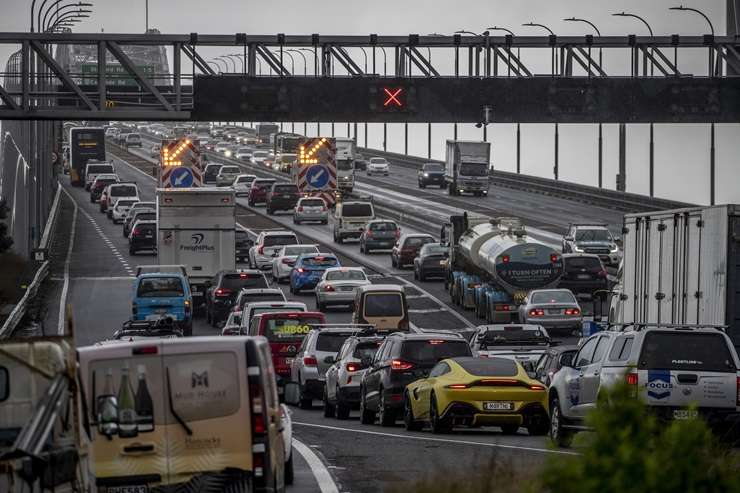
Traffic builds up on Auckland Harbour Bridge. Tookey believes the crossing has a limited lifespan. Photo / NZME
Tookey said if Auckland was Mumbai, 38 million people would live in the city: “That’s the degree of lack of densification, that’s the degree of lack of utilisation that we have in our largest metropolitan city.”
Mumbai can handle the investment in mass transportation systems, for example, with so many people but Kiwis have “sky high” expectations and want everything, including new stadiums.
“We have first-world expectations at every level and yet we don’t necessarily make the necessary investments – we are at the bottom end of the OECD investment index associated with infrastructure.”
Another big element in the infrastructure conundrum was the onward march of technology, Tookey said.
For example, just 20 years ago billions of dollars were invested worldwide into putting ethernet cables in office buildings but now they were hardly used.
Trying to keep up with technology, combined with three-year electoral cycles, means getting anything done was “monumentally” difficult and expensive.
A case in point was the continual parking of a second Auckland harbour crossing, and Tookey predicted the harbour bridge would be out of service in 20 years for structural reasons with potentially nothing there to replace it.
While the Government was yet to be clear on what the plan was for infrastructure, he said areas like Kumeu, in the north west of Auckland, where housing development was allowed to go ahead at a rapid rate, was still waiting for a bypass, and though there was a train track, there was no train.
Wesley Gerber, a development and subdivision expert with Bayleys, lives out that way and said there was still a lot of housing capability in the north-west but infrastructure solutions were needed to support it.
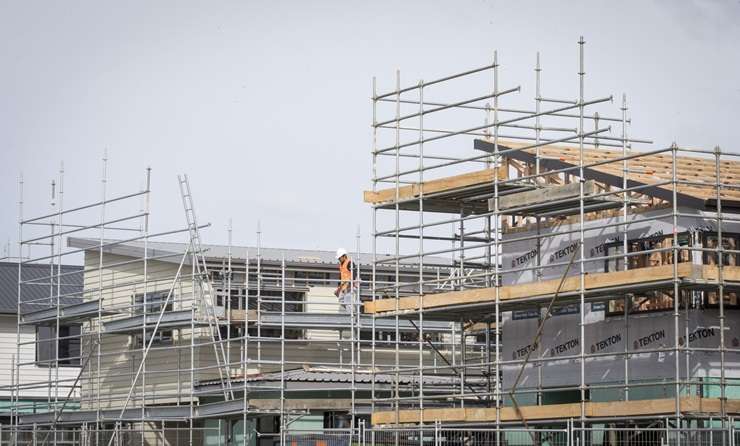
Houses under construction in Silverdale, on the northern fringes of Auckland. Photo / Greg Bowker
“I think the argument we don’t have enough land to support housing is incorrect. It’s infrastructure restraint that is the issue – it’s the infrastructure to unlock it.”
A process was underway to try to find solutions, he said, similar to what happened in Drury to the south of the city where development was expected to result in a town the size of Napier.
Gerber said in Drury, Auckland Council increased development contributions for developers to pay for infrastructure over 30 years instead of 10, and there could be something similar for the north-west and other areas.
But that was for new developments – existing house owners were putting up with the frustration of major congestion: “It’s just been delays after delays after delays.”
Gerber said new funding models were needed for infrastructure, pointing to Milldale near Silverdale where he said a public private partnership saw infrastructure funded by an entity to be paid back over time via targeted rates.
“Milldale is quite a good success story in my opinion. There’s a lot of people that have moved up that way.”
But in Kumeu the wait goes on. On the bright side, Gerber said, the Government had made the bypass a road of significance – the downside was the start date was 4-10 years away.
The congestion was so bad that some people who lived in the north-west drove to Albany so they could get the bus to town, said Diego Traglia, a top Harcourts real estate agent based in West Auckland.
That’s 2.5 hours commuting each way, he said. The Italian-born agent, who has lived in London, said roading was Auckland’s biggest problem and he was staggered to find recently that there were still pockets of the city without cell phone reception.
“I was in a place between Waimauku and Helensville and there was zero reception – it’s surrounded by $2m and $3m houses, that particular part where I was driving and it was beautiful, beautiful, beautiful, but no reception.”
Traglia said big cities that do well were cities where people could rely on public transport, be that buses or over-ground or underground trains, but said while Auckland was blessed with a harbour, the ferries were a joke.
“A lot of them get cancelled because of the weather or maybe they’ve got maintenance. I sell a lot in Hobsonville and say ‘it’s minutes to the ferry’ and people are saying, ‘yeah, but it’s not reliable’.”
Traglia cautioned he was a real estate agent, not an infrastructure expert, but when asked how to solve things he said: “Spend more money.”
Source – One Roof






